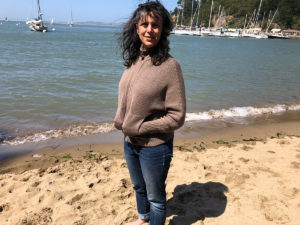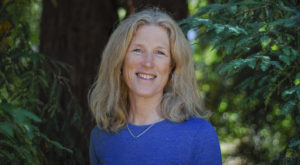
Summer…that time of year we imagine we’ll slow down, stretch out into the longer days, and enjoy the extra three or so hours of sunlight. It’s when nature relaxes after all the busy blooming and birthing and growing in spring. It’s when we hope that schedules will leave us alone a little, that time feels more our own. There’s not much new to say about time, the idea, but summer’s a good moment to remember how much of it we do and don’t have. How long some things take, how quickly others pass. Many of the stories in this issue of Bay Nature touch on time and our ever-shifting perceptions of it.
In western Sonoma County, Save the Redwoods League, which is celebrating its 100-year anniversary, took a number of core samples from coast redwoods on a property the League had been eyeing for purchase for a few years. They found that one of the trees is more than 16 centuries old; it was a seedling when the Western Roman Empire began to crumble. The property is now protected in perpetuity.
Historically, there’s no record of osprey ever having nested along the San Francisco Bay, even though it’s good hunting grounds for a fish-eating species. A 2,600-year-old Ohlone Indian shell mound in Emeryville full of animal remains contained no signs of osprey. Then, in the last several decades, osprey started to arrive. More than 40 pairs now nest along the Bay, including Rosie and Richmond, whose every feather ruffle is chronicled by the wonderfully addictive (ahem, time suck?) osprey cam in Richmond. Their three chicks are due to fledge any moment.
The Bay water those young birds will begin perusing for dinner is rising. For at least 120,000 years the West Antarctic ice sheet has been its current size, and now it’s melting at a speed that is under intense study and of great significance to the Bay Area (and the West Coast and Eastern Seaboard). As the ice sheet shrinks, it correspondingly increases sea level rise on the West Coast due to some neat tricks of physics, and in a single day its rivers of ice, which rival the size of New Hampshire, can move about 10 feet, dumping massive amounts of ice into the ocean. The moderate estimate from the Intergovernmental Panel on Climate Change, which doesn’t include the latest science on West Antarctica, predicts sea level will rise about three feet in the Bay Area over the next eight decades.
Bay Area planners know this well, and last fall some of them launched Resilient by Design, a competition among designers to re-envision our shoreline where it’s most vulnerable to sea level rise. The participants presented their nine practical, implementable, community-driven concepts in May. Coming up with ideas is fun compared to paying for and executing them, we all know. It’s taken a good 20-years-and-counting of diligent, difficult work to remedy the flooding problems along the 14-mile Guadalupe River in San José, as well as bring back some of its natural processes. But today it’s habitat for salmon, beaver, and egrets and protects more than 6,000 homes and 300 businesses, along with schools and institutions. A project based on a good idea from the Resilient by Design challenge could take 20 to 30 years to complete, but 2050 is right about when sea level rise will begin to impact our daily lives. So now is the time to start.
This summer Bay Nature itself will be putting the finishing touches on design changes—plans that have been underway for the last year, to freshen the look of the magazine and our website. We’ll have new regular story slots, both in the print publication and online, allowing more voices to be heard. But as before, we’ll continue to publish exceptional science journalism, nature writing, art, and photography about the Bay Area. We’re excited about sharing our new look with you this fall. Until then, may your time be well spent in nature.


